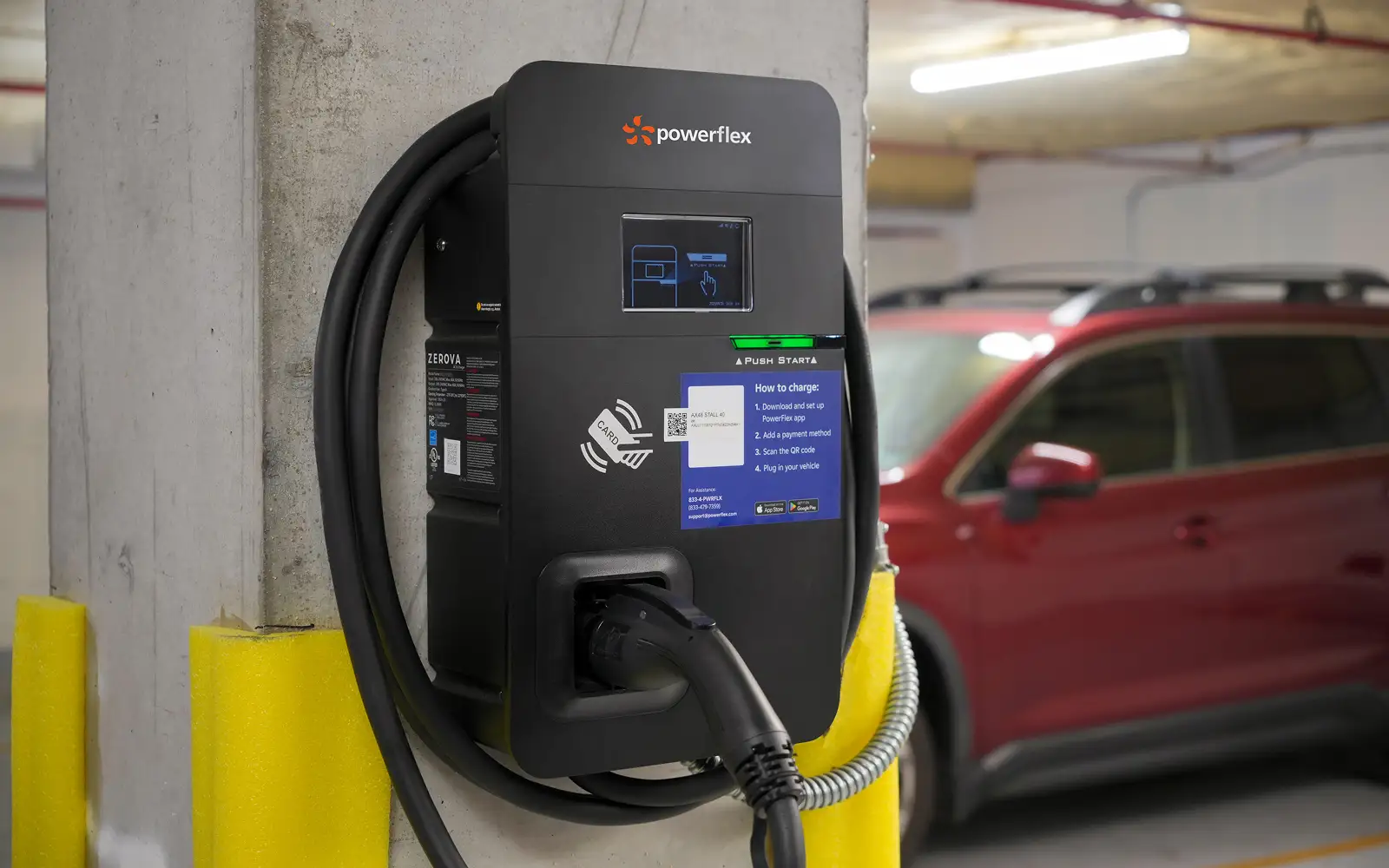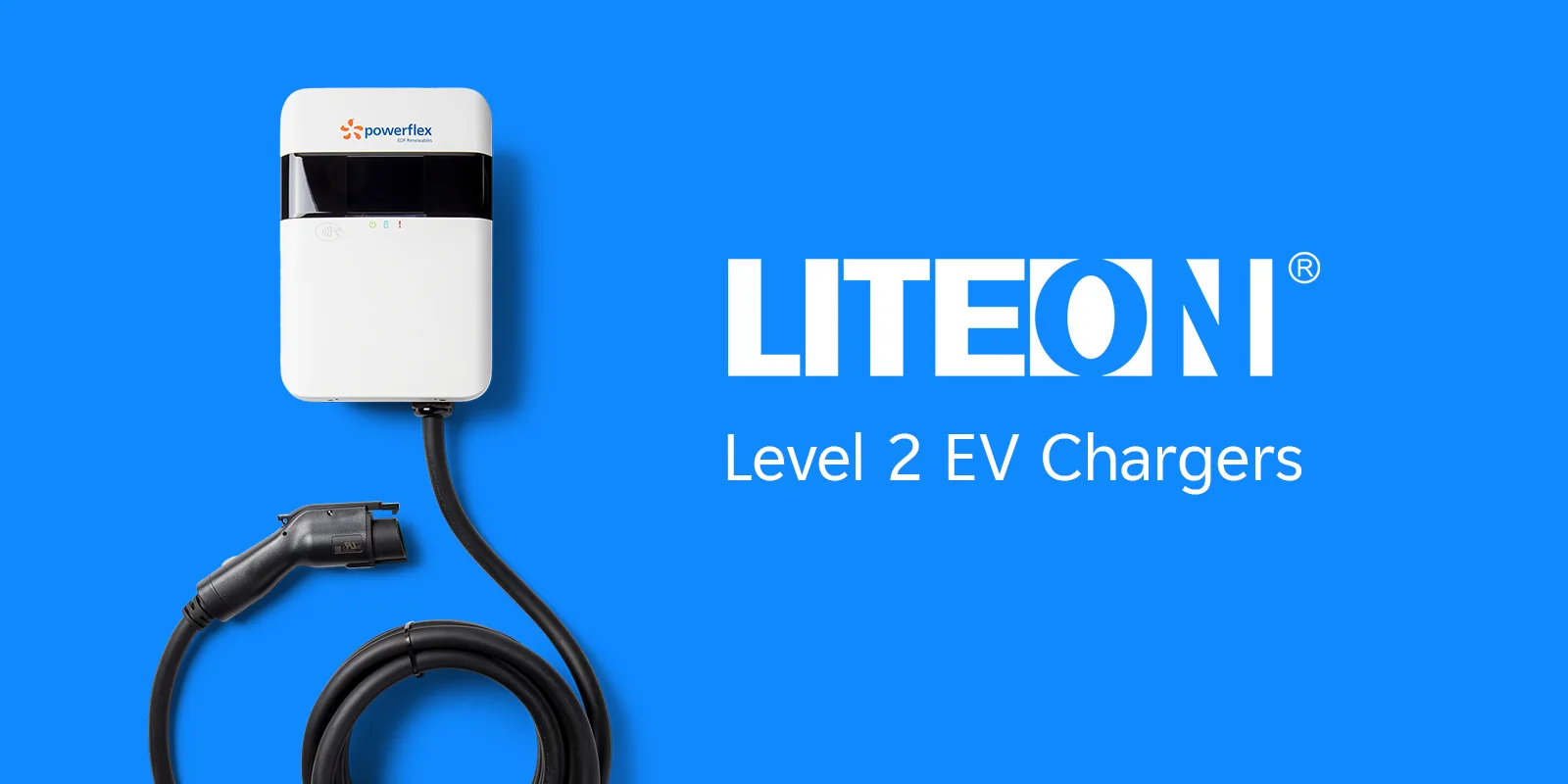How to Create an EV Charging Billing System

There are many things to consider when starting a commercial EV charging project. Choosing between charger types and deciding how many charging stations you need are big decisions that can affect the project’s success. However, one thing that is often overlooked is an EV charging billing system.
Let's explore the most common billing options for EV charging, the available payment methods, and how the PowerFlex team can support you in developing a pricing strategy that meets your needs.
Most Common Billing Options for EV Charging
The two most common billing options for EV charging are energy-based pricing and time-based pricing. One bills drivers based on how much energy their vehicle consumes and the other charges based on how long their vehicle charges at the charging station.
Time-Based Pricing
In time-based pricing, drivers are charged based on the duration of their charge session. While this method is very straightforward and easy to calculate, it does not account for the variances in EV battery capacities and charging speeds. In other words, not all EV models need to charge for the same amount of time, and some can consume a lot more electricity in a shorter period.
Time-based pricing can be perceived as unfair to EV model owners with a slower charging rate, but it can still make sense for some customers. For example, a workplace with EV chargers might use time-based pricing to encourage employees to move their cars (and make room for someone else) once their charge session is complete. This can maximize the availability of limited charging spots.
Energy-Based Pricing
Energy-based pricing charges drivers based on the amount of electricity their vehicle consumes. The site owner sets a per-kilowatt-hour rate and drivers pay only for the energy used during active charging.
Current EV charging pricing trends favor this model, which can be easier for drivers to grasp since it mirrors how gasoline refueling is charged. Another benefit of energy-based pricing for drivers is cost control, as they can base the energy their car receives on how much they wish to spend.
Energy-based pricing can also benefit property owners, as it allows them to set prices that are more closely aligned to electricity rates.
Billing Standardization
Though time-based and energy-based models are both in use today, there is a push to create uniformity across charging networks.
California has issued EV charger billing requirements mandating that "EV charger charging rates must be based on a price per megajoule or kilowatt-hour. All EV chargers must be able to indicate the billing rate at any point during a transaction." Additionally, the California Type Evaluation Program (CTEP) requires that chargers clearly display energy output and price in kWh to ensure accuracy and protect against fraud.
While these rules apply to just California, the state is often a leader in environmental policy — which means more states may soon follow its lead.
Types of Payment Methods for EV Charging
The most common payment methods include paying through a smartphone app, at a kiosk, and direct payment using a credit card. An emerging method known as Plug & Charge is also becoming popular. Let's explore these payment methods so you can understand which might be best for your site.
App-Based Payment
With app-based payment, drivers manage and pay for their charge session through the charging provider's mobile app. Typically, drivers scan a QR code on the charger or manually enter the station's unique ID number. After confirming pricing and selecting their payment method, they can plug in to being charging.
Once charging, the app allows drivers to monitor their real-time charging status, the current cost, and time to charge completion. This enables shopping and other nearby activities while the vehicle is charging, and can alert drivers to move their car when charging is complete.
PowerFlex offers an app on Android and iOS. Unlike some providers’ apps, PowerFlex offers an Offline Mode that allows users to start, monitor, and modify their charge session even without cell service.
Kiosk-Based Payment
Kiosk-based payment enables drivers to pay for their charge session with a credit card at a central digital kiosk. This method offers a variety of benefits. Drivers who regularly use public lots and garages are likely already familiar with paying for parking at a kiosk. And they don't need to download an app, which can save them time.
PowerFlex offers kiosk payment paired with the installation of your EV charging stations. This is a highly economical choice for business owners who are installing a large number of chargers at a single site.
On-Charger Point of Sale (POS)
On-charger payment is a point-of-sale (POS) payment method where drivers pay with a credit or debit card directly at the charging station — the same way they would buy gas for a traditional internal combustion engine car.
POS allows drivers to avoid installing various apps from different operators or walking to a central kiosk. By removing payment friction, it makes public charging more approachable for new EV drivers and incentivizes them to use your chargers.
Plug & Charge
Plug & Charge is a fast-growing EV charging payment trend. No apps, kiosks, or card readers are required; all a driver needs to do to start and pay for they charge session is plug the charging cable into their vehicle. (This will sound familiar to anyone who has ever charged at a Tesla Supercharger, as the process is similar.)
Plug & Charge is enabled by ISO 15118, an international communication standard for charging EVs. With Plug & Charge, a driver's payment method is stored in their car's internal computer. When they connect to a Plug & Charge-enabled station, the station automatically detects their ID and payment method through the charger connection.
A truly seamless charging experience, Plug & Charge is perhaps the most convenient and easy-to-understand charging method, as it mirrors the at-home charging experience. As Plug & Charge continues to grow in popularity, other charging methods may be phased out.
Use Cases That Affect EV Charging Billing
The right billing strategy for your EV charging stations will depend on the type of property you are operating as well as your business goals. We'll explore billing strategies for workplaces, multi-family properties, and public spaces.
Workplaces
Most workplaces choose to offer charging to employees as a free amenity. Providing complimentary EV charging can attract elite and eco-conscious job candidates and help retain existing employees who drive electric vehicles.
However, charging employees a nominal fee to use workplace chargers can help employers offset the expense of installing and powering stations. Implementing adaptive EV charging load management software can also help mitigate these costs, as well as enhance worker productivity.
Multi-Family Properties
Multi-family properties may offer EV charging as an amenity or as a way to generate revenue. The decision depends on the business model of each individual property owner.
Some options for multi-family property owners include:
- Levying a small fee to tenants as a revenue stream, and to offset the cost of charger installation.
- Offering free charging as an amenity, but charging tenants higher rents.
- Offering free charging without raising rent in hopes that happy tenants will choose to renew their leases, thus preventing churn.
Public Spaces
Public charging is almost always revenue focused. When a shopping center, restaurant, or public venue installs EV charging stations, it is both a public service and an opportunity to generate income through a pricing model.
Fee-based public charging includes public parking lots, parking garages, park-and-ride lots near public transportation, and municipal street parking spots.
EV charging solutions for parking facilities can turn your lot or garage into a green energy hub and steady source of revenue. PowerFlex makes it easy with a versatile selection of EV charging station designs and pricing options.
PowerFlex Works With You on Setting EV Charging Pricing
So, how much should you actually charge drivers to use your charging stations? Unlike other service providers, we work with customers to set their charging price and provide them with experience-backed advice and guidance.
We've learned the elements of an effective and profitable pricing strategy for EV charging stations. For example, charging too high or constantly changing the pricing can create a bad customer experience and dissuade people from using your EV chargers. But with the right strategy, you can attract eco-friendly drivers and become a magnet for EV charging in your neighborhood.
With our help, businesses don't need to spend time and effort trying to figure out everything on their own like setting up their pricing, evaluating their pricing, and changing their pricing if needed. We can also help businesses avoid some common pitfalls that come with managing their own pricing. Contact PowerFlex today to learn how you can leverage dynamic EV charging billing solutions that can satisfy drivers of electric cars as well as your own business needs.
But why stop there? Let us handle your entire EV charging project, including designing and installing EV charging infrastructure and implementing EV charging software. Plus, find out how other clean technologies like solar, energy storage, and energy management can help achieve sustainability goals and manage operating costs.



